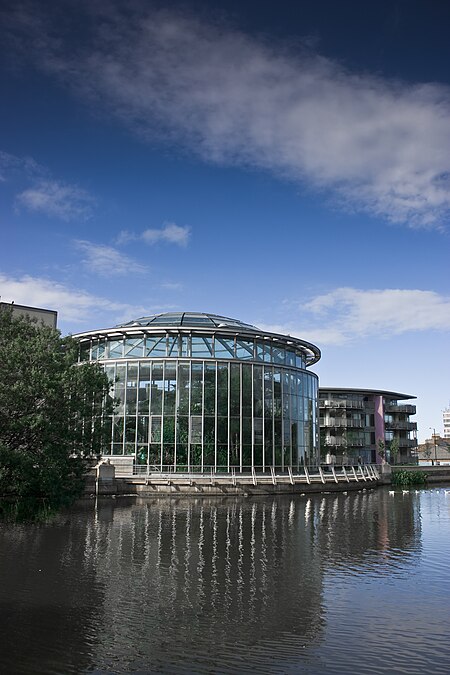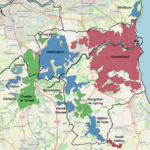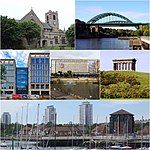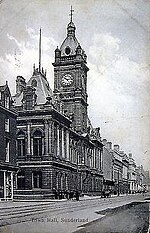Sunderland Museum and Winter Gardens
1846 establishments in EnglandArt museums and galleries in Tyne and WearBuildings and structures in the City of SunderlandCeramics museums in the United KingdomDecorative arts museums in England ... and 12 more
Glass museums and galleriesGrade II listed buildings in Tyne and WearHistory museums in Tyne and WearIndustry museums in EnglandLocal museums in Tyne and WearMuseums established in 1846Museums in the City of SunderlandNatural history museums in EnglandSunderlandTextile museums in the United KingdomTyne & Wear Archives & MuseumsUse British English from August 2015

Sunderland Museum and Winter Gardens is a municipal museum in Sunderland, England. It contains the only known British example of a gliding reptile, the oldest known vertebrate capable of gliding flight. The exhibit was discovered in Eppleton quarry. The museum has a Designated Collection of national importance.
Excerpt from the Wikipedia article Sunderland Museum and Winter Gardens (License: CC BY-SA 3.0, Authors, Images).Sunderland Museum and Winter Gardens
Burdon Road, Sunderland Ashbrooke
Geographical coordinates (GPS) Address Phone number Website External links Nearby Places Show on map
Geographical coordinates (GPS)
| Latitude | Longitude |
|---|---|
| N 54.904166666667 ° | E -1.38 ° |
Address
Sunderland Museum and Winter Gardens
Burdon Road
SR1 1PP Sunderland, Ashbrooke
England, United Kingdom
Open on Google Maps










